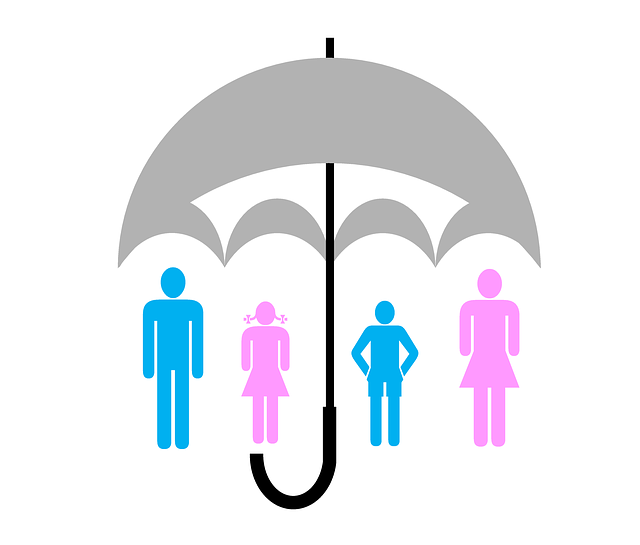Small businesses should prioritize risk management by identifying industry-specific hazards, prioritizing risks based on impact and likelihood, and tailoring insurance plans accordingly. Focus on essential coverages like general liability and property insurance while exploring cost-effective options through bundled policies and discounts. Enlist professional guidance to avoid overlooked risks and misinformed decisions, ensuring tailored coverage that meets unique business needs. Regularly review risk management strategies and insurance policies as the business evolves, balancing cost and coverage for long-term success and protection.
“Small businesses face unique challenges, making effective risk management crucial for long-term success. In this guide, we explore how to navigate affordable small business insurance options without breaking the bank. By understanding your risks, prioritizing essential coverage, and leveraging smart policy strategies, you can protect your startup or SMB on a budget. Learn the pros and cons of DIY vs. professional guidance and discover tips for regular reviews to stay protected as your business evolves.”
Understanding Your Small Business Risks

Understanding your small business risks is a crucial first step in effective risk management, especially when working with a tight budget for affordable small business insurance. Start by identifying potential hazards specific to your industry and operations, such as property damage from natural disasters or data breaches leading to cybersecurity issues. Regularly review and update this list, considering factors like seasonal changes, new regulations, or evolving technologies that could introduce fresh risks.
Once identified, prioritize these risks based on their likelihood and potential impact. This will help you allocate resources efficiently. For instance, a small local café might focus more on property damage and liability coverage, while a digital marketing agency would prioritize data protection and intellectual property insurance. Understanding your unique risk profile enables you to tailor an affordable small business insurance plan that offers the right balance of protection without exceeding your budget.
Prioritizing Coverage: What's Essential?

Small businesses often have limited resources, so prioritizing essential coverage is crucial when it comes to risk management and affordable small business insurance. The key is to focus on protections that align with your specific industry and potential risks. General liability insurance is usually a must-have, shielding your business from financial loss due to accidents or injuries on your premises. Property insurance is another critical component, covering the physical assets of your business, whether it’s a retail space, office, or inventory.
When budget constraints are a concern, consider starting with these core coverage areas and tailoring policies as needed. For instance, if you’re a service-based business without a physical location or valuable inventory, you might opt for a simpler liability policy. Conversely, an e-commerce retailer should prioritize product liability insurance to protect against claims related to sold goods. Regularly reviewing your insurance needs and keeping up with industry changes will ensure that you maintain the right amount of coverage at an affordable cost.
Affordable Options for Startups and SMBs

Many startups and small businesses (SMBs) worry about affording comprehensive insurance, but there are numerous cost-effective options available that can provide solid protection. Affordable small business insurance doesn’t mean skimping on quality; it means being strategic in your choices. Start by identifying the most critical areas of risk for your business, such as general liability, property protection, or professional responsibility. These core coverage areas often provide a robust safety net without breaking the bank.
Explore options like basic business owner policies (BOPs), which bundle multiple types of insurance into one package, making it more affordable than purchasing each policy separately. Additionally, many insurers offer discounts for bundling services, maintaining a clean claims history, or implementing safety measures at your location. Keep in mind that while affordability is essential, you should never sacrifice the level of coverage needed to protect your business from significant financial losses.
Do-It-Yourself vs. Professional Insurance Guidance

Many small business owners are on a tight budget, so they may be inclined to handle their insurance needs DIY-style. While it’s possible to navigate the affordable small business insurance landscape independently, enlisting professional guidance can offer significant advantages. DIY methods can sometimes lead to overlooked risks or misinformed decisions, potentially leaving your business vulnerable. Insurance professionals have in-depth knowledge of various policies and their nuances, allowing them to tailor a package that fits your unique needs. They can also help you understand coverage limits, exclusions, and potential gaps, ensuring you’re not left with unexpected costs when it matters most.
Professionals stay updated on industry changes and new policy offerings, enabling them to recommend the best options for your business’s specific risks. This expertise can save you time, money, and future headaches by avoiding costly mistakes or oversights. While there are resources available to guide small business owners, working with a professional ensures a comprehensive understanding of your coverage, enhancing your risk management strategy.
Maximizing Your Budget with Smart Policies

Maximizing your budget as a small business owner is an art, and one crucial aspect is navigating affordable small business insurance options. Smart risk management doesn’t always mean cutting corners; it’s about making strategic choices to protect your assets effectively. One way to do this is by implementing tailored policies that offer the right coverage at a price that fits your budget.
Instead of opting for the cheapest option available, take time to assess your business needs and risks. Compare quotes from multiple insurers, ensuring you understand what’s included in each policy. You might find that slightly higher premiums provide broader protection, potentially saving you money in the long run by covering more potential liabilities. Thus, balancing cost and coverage is key to maximizing your budget and safeguarding your small business.
Staying Protected: Regular Reviews and Updates

Staying protected is a vital aspect of any small business, and regular reviews and updates to your risk management strategies are key to ensuring long-term success. It’s easy for circumstances to change—a new product line, expansion into new markets, or even shifts in the economy—and these developments can introduce fresh risks. That’s why regularly reassessing your insurance coverage is essential. Affordable small business insurance shouldn’t be a one-time purchase; it should evolve with your business.
By conducting periodic reviews, you can make informed decisions about adjustments to your policy. You might find that additional coverage is necessary for emerging threats or that certain aspects of your current plan are no longer relevant. Staying proactive in this way not only protects your investment but also demonstrates responsible business ownership, which can be a significant advantage when it comes to securing future funding or partnerships.
